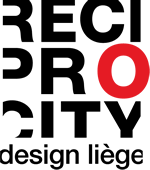
Mapping the Design World Meeting Point at Reciprocity. Curated by Max Borka
The Work of Ernesto Oroza will be highlighted at the Mapping the Design World Meeting Point at Reciprocity, the Design Biennial for Social Innovation in Liege, Belgium, from October 5 through October 28 2012, and will also feature in the accompanying MAP-Mapping the Design World magazine – focusing on some 100 examples of (Do) Good Design from an equal number of countries.
http://www.designliege.be/fr-287-mapping_the_design_world.html
CUBA/ ERNESTO OROZA AND THE CUBANS’ TECHNOLOGICAL DISOBEDIENCE/ The term Technological Disobedience was recently coined by the Cuban artist and designer Ernesto Oroza to summarize and describe the unique way in which his compatriots relate to technology: pressured and constrained by a crisis that is hitting harder and harder, and with no industry in the country, the average Cuban survives by totally disrespecting, surpassing and completely violating the “authority” and often even very complex technology of the objects that are still lingering around, thinking far beyond the capacities and uses these objects were originally meant for by their producer. Partially supported by the authorities, that even produced manuals on the subject, their audacity reaches that far that many even put their own life at risk, as is the case with the Rikimbili or improvised motorcycles. Nevertheless: scarcity has provided them with a creative richness that so-called technologically advanced countries have totally lost. And now that the crisis starts to globalize, it makes the average Cuban also much better prepared for the future – Max Borka reports.
The star ting point for Mapping was to show 100 projects from an equal number of lands, with a clear preference for those countries largely off the conventional design radar, such as Afghanistan or Zambia. Positive discrimination also determined the selection of an average of one project per country, giving the same value to inconspicuous places like the Faroe- and Lofoten Islands as to the USA, Russia and China. Finally, rather than going for the most important project in each country – reducing the innumerable emergency shelters or schools developed for third world countries – we took a more panoramic view. Although some detours took place on route, the final destination followed the initial plan, resulting in a deformed image of a topsy-turvy world that offers a life-affirming compensation for the equally distorted images we are usually confronted with.
But please: this outcome makes no claim to be representative or exhaustive. Instead, it’s a selection that suggests the endless range of strategies, and the extraordinary dynamics with which these possibilities are being exploited; an imaginativeness, enthusiasm and even joyfulness that totally refutes the cynicism, despair and dreariness that often accompanies social design. Working in diverse realms, which are often hardly connected, their order of battle is scattered: eco design, sustainable and experimental design, critical-, political- and radical design, anti-design, up cycling and recycling, re- this, re-that, re-whatever. Their goals and methods differ greatly. And yet, what binds them is stronger: a mutual striving for what in an ideal world every form of design should take as its main goal, namely the interests and well-being of society as a whole, and not just those of one particular group, let alone exclusively the interests of corporate industry. Each in its own way has also raised rebellion against the tyranny of what is proclaimed to be good design by consumer society: slick, glamorous, luxurious, or simply practical objects of desire, good-looking and highly seductive, but also lethal and perilous — ‘formes fatales’ that promise heaven, but are a one-way ticket to its antipode.
Parallel to generic design’s global explosion and implosion on a semantic level, other fundamentals are causing a worldwide crisis, which even the most hard-core cannot ignore. This ongoing turmoil plays directly to the Biennial’s theme, the relationship between design and memory: in its eternal celebration of the new, design suffers from an innate Alzheimer, wherein the logic of permanent renewal that has to guarantee a return of investment also resulted in overproduction, a programmed obsoleteness of goods, and a market that is oversaturated — the only way out: conquer new territories. Not only does this have disastrous consequences in terms of working conditions or waste, with design being an offspring from the West, but it has also wiped other cultures away entirely, erasing their memory and identity.
All along this process, the last word in the magical formula Form follows Function expanded to Finance & Fashion, Fun, Funk & Fuck, Fiction & Friction, or Fury & Fairy. Yet other F-words urgently have to be added and replace them, such as Famine, Favela, Fai-da-te, Fragility and Foco or Foquismo, the ideology that grew out of Che Guevara’s premise that a small group of dedicated people can set off a revolution based on a hit-and-run guerrilla strategy. By nature, and in opposition to the power game of corporate industry, most of the initiatives highlighted in Mapping are small to humble. What they propose may also come far too late, their effect hardly exceeding that of the proverbial drop of water on the proverbial hot plate. And yet: the power of social networking alone often raises their impact far beyond the local level, making them not unlike Edward Norton Lorenz’ butterflies, which can alter the path of a tornado in Texas by flapping their wings in Brazil. Useless as it may be in isolation, imagine what would happen if they started to do so together, and Mapping aspires to be a catalyzer that helps synchronize all that flapping.
Curator : Max Borka
Assitant : Hanne Vanhaesebrouck
Scenography :
Concept : Max Borka
Design : Johanna Dehio & Dominik Hehl / www.johannadehio.de / dominikhehl.de/
Graphic Design :
Fremdkörper (Andrea Mehlhose & Martin Wellner)
Photography : Anna Pannekoek
Practical information
VENUE:
Musée de la Vie wallonne
Espace Saint-Antoine
cour des Mineurs
4000 Liège
www.viewallonne.be
OPENING TIME:
Tuesday to Sunday : 9.30am-6pm
OPENING :
Thrusday 4 October 2012 from 6pm
Entrance :
www.designliege.be/registration (limited capacity)